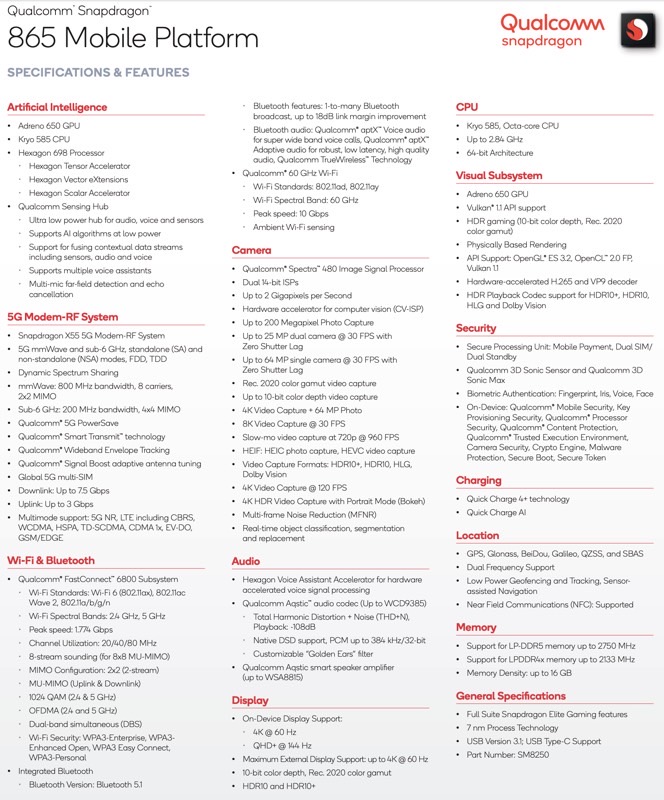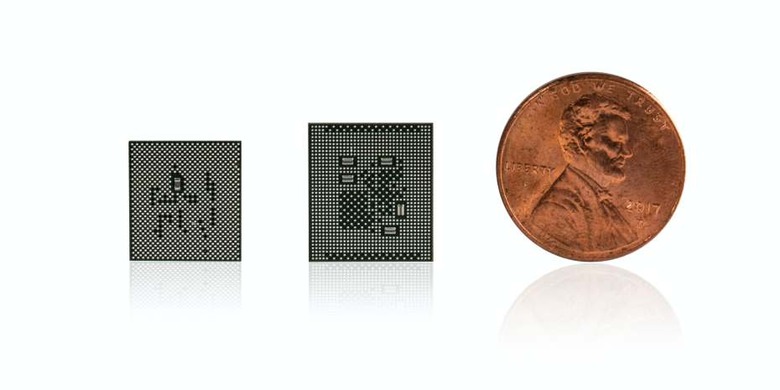Snapdragon 865 Teases The Next-Gen Smartphone Features We'll Get From Galaxy S11 And Pixel 5
Qualcomm unveiled its next-gen mobile chips that will power several Android devices next year, including the Snapdragon 865 flagship, and the Snapdragon 765 mid-range processor. The Galaxy S11 will likely come in two chip versions, just like its predecessors, including Snapdragon and Exynos silicon. And the Snapdragon 865 will power many Android flagships, starting with the Galaxy S11, which should launch in February and all the way through October 2020, when the Pixel 5 will be unveiled. After announcing the new flagship, Qualcomm revealed more details about the Snapdragon 865, teasing the kind of new features we should expect from expensive Android phones next year.
Unsurprisingly, the Snapdragon 865 is a 7nm chip just like its predecessor, but it's of the EUV process variety, just like its main rivals, including Apple's A13 that powers the iPhone 11 series. When it comes to performance, the chip will deliver 25% faster CPU and 20% GPU improvements. Efficiency also increases by 25% and 35%, respectively. When it comes to the GPU, Qualcomm is going the extra mile in a novel way, as it plans to provide GPU updates directly through the Play Store, which should dramatically increase the speed of updates the graphics card might require over time.
Since we did mention frequency, the Snapdragon 865 will support Quick Charge 4+ technology or speeds of up to 27W of wired charging. On top of that, Quick Charge AI will use artificial intelligence to extend battery life depending on usage.
Speed improvements, meanwhile, should also come from other components, including memory and the wireless radio. The 865 will support even faster LPDDR5 RAM memory up to 2,750MHz, and some vendors out there might actually deliver such memory in 2020 devices. Samsung is easily one of the suspects, considering that it's also an LPDDR5 RAM vendor.
When it comes to connectivity, the Snapdragon 865 might not have a built-in 5G modem, but Qualcomm will pair it with a brand new 7nm 5G chip, the Snapdragon X55 which will support theoretical speeds of up to 7.5Gbps (downlink) and 3.0Gbps (uplink). Wi-Fi 6 is also on board, as is Bluetooth 5.1. Dual SIM dual standby (DSDS) support is also built-in, which means dual SIM phones will be able to use both SIMs at the same time, even if the secondary is a virtual eSIM card.
Other notable features concern the screen, with the chip ready to support up to 144Hz displays, and the cameras, which will process data faster than ever from sensors going all the way ip to 200-megapixel. We're also looking at a new Spectra 480 ISP as well as support for 8K video recording, as well as all improved slow-motion recording capabilities.
Finally, there's improved AI on board of the Snapdragon 865 as well. You might not necessarily be aware of what AI does for you on a mobile phone, but all flagship handsets have artificial intelligence and neural processing support on board. The Snapdragon 865 is no different, featuring a 5th-gen AI engine that supports up to 15 trillions of operations per second.
In other words, all 2020 Android flagships, from Galaxy S11 to Pixel 4, should be faster than 2019 models in every sense of the word and include features that were not available before, like higher refresh rate screens, fast RAM, and primary camera sensors topping 100-megapixels. And it so happens that the Galaxy S11 is already rumored to feature a 120Hz display and 108-megapixel primary camera.

